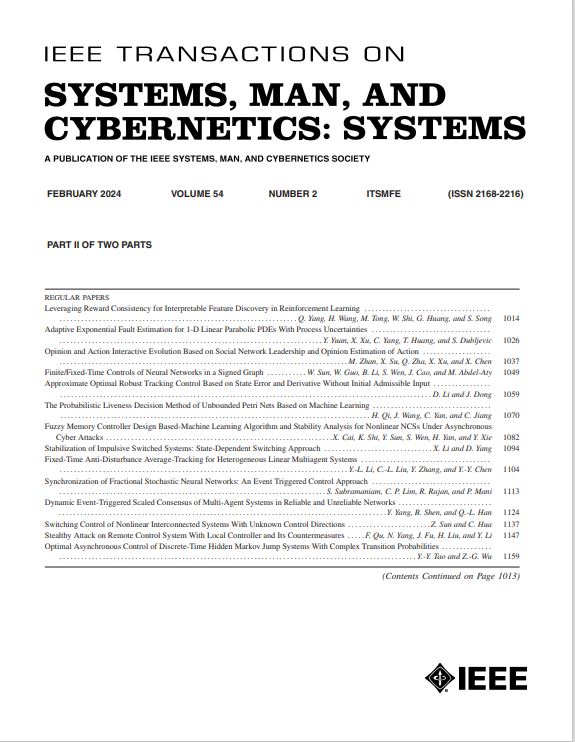An Adaptive p-Norms-Based Kinematic Calibration Model for Industrial Robot Positioning Accuracy Promotion
IF 8.6
1区 计算机科学
Q1 AUTOMATION & CONTROL SYSTEMS
IEEE Transactions on Systems Man Cybernetics-Systems
Pub Date : 2025-02-17
DOI:10.1109/TSMC.2025.3535783
引用次数: 0
Abstract
Industrial robots inevitably incur kinematic errors in the advanced manufacturing and assembly processes, resulting in the severe reduction of the absolute positioning accuracy (APA). Kinematic calibration (KC) is well-known as a vital technique in APA-promoting tasks. However, existing KC models generally adopt a single distance-oriented Loss, e.g., an求助全文
约1分钟内获得全文
求助全文
来源期刊

IEEE Transactions on Systems Man Cybernetics-Systems
AUTOMATION & CONTROL SYSTEMS-COMPUTER SCIENCE, CYBERNETICS
CiteScore
18.50
自引率
11.50%
发文量
812
审稿时长
6 months
期刊介绍:
The IEEE Transactions on Systems, Man, and Cybernetics: Systems encompasses the fields of systems engineering, covering issue formulation, analysis, and modeling throughout the systems engineering lifecycle phases. It addresses decision-making, issue interpretation, systems management, processes, and various methods such as optimization, modeling, and simulation in the development and deployment of large systems.
 求助内容:
求助内容: 应助结果提醒方式:
应助结果提醒方式:


